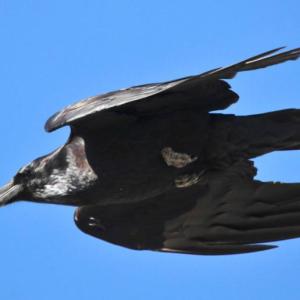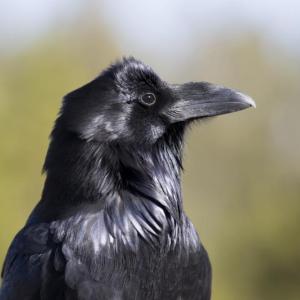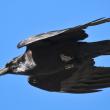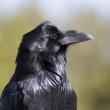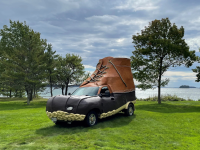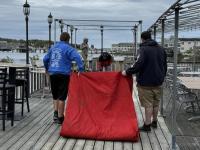Is That a Raven or a Crow?
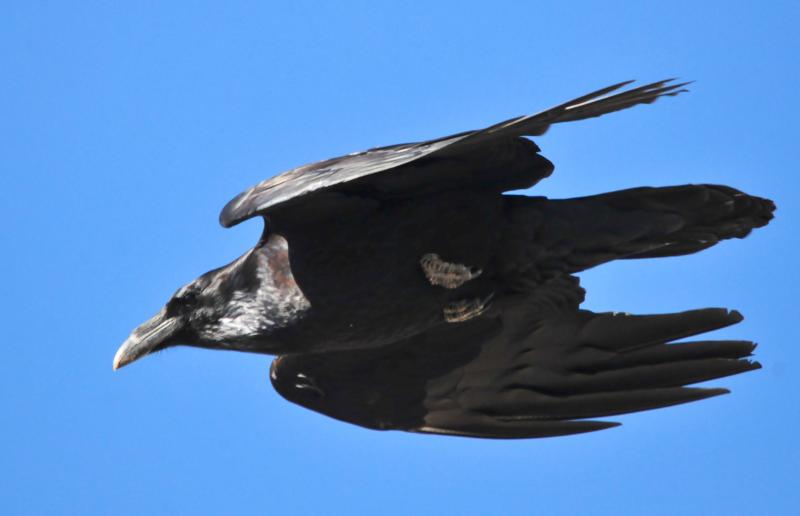 Ravens are larger than crows and have a larger, longer bill and a wedge-shaped rather than squared-off tail. Photo by Tom Koerner/USFWS courtesy of Wikimedia Commons.
Ravens are larger than crows and have a larger, longer bill and a wedge-shaped rather than squared-off tail. Photo by Tom Koerner/USFWS courtesy of Wikimedia Commons.
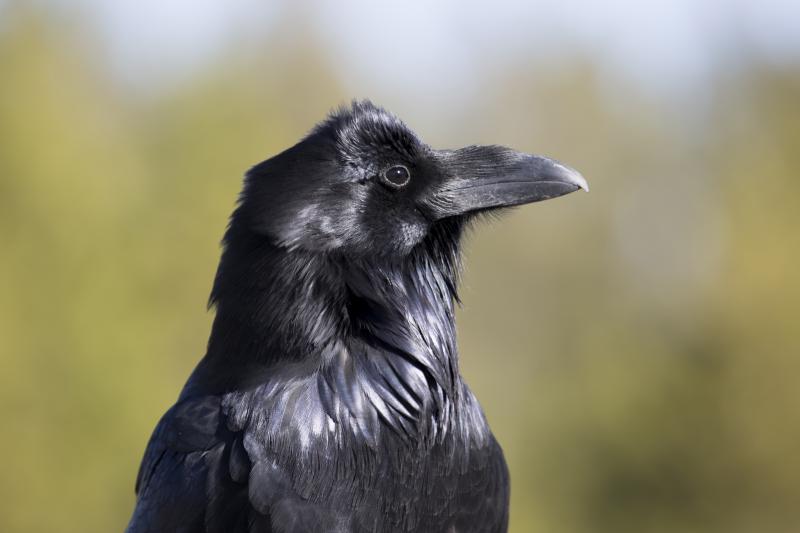 The common raven became not so common after decades of habitat loss and human persecution but the species has regained much of its former range and has become more widespread in Maine over the last 50 years. Photo by Neal Herbert/National Park Service courtesy of Wikimedia Commons.
The common raven became not so common after decades of habitat loss and human persecution but the species has regained much of its former range and has become more widespread in Maine over the last 50 years. Photo by Neal Herbert/National Park Service courtesy of Wikimedia Commons.
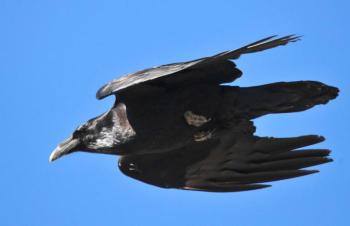 Ravens are larger than crows and have a larger, longer bill and a wedge-shaped rather than squared-off tail. Photo by Tom Koerner/USFWS courtesy of Wikimedia Commons.
Ravens are larger than crows and have a larger, longer bill and a wedge-shaped rather than squared-off tail. Photo by Tom Koerner/USFWS courtesy of Wikimedia Commons.
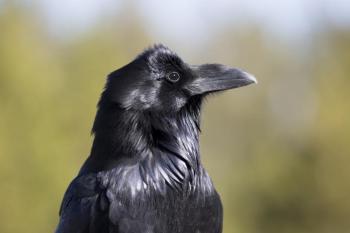 The common raven became not so common after decades of habitat loss and human persecution but the species has regained much of its former range and has become more widespread in Maine over the last 50 years. Photo by Neal Herbert/National Park Service courtesy of Wikimedia Commons.
The common raven became not so common after decades of habitat loss and human persecution but the species has regained much of its former range and has become more widespread in Maine over the last 50 years. Photo by Neal Herbert/National Park Service courtesy of Wikimedia Commons.
No one would call the sounds that they make “musical” or “pretty.” Regardless, the low croaks and loud raucous squawks of common ravens are among our favorite sounds in the bird world. There’s something about those sounds that, to us, convey a sense of wildness and wilderness, maybe even a connection to our deeper human history.
Ravens disappeared from much of their original range in the U.S. as forests were cleared and humans persecuted them. Even in our early birding years, it was quite a treat to see one of these big black birds and hear the croaking call echoing from overhead.
Many people find it hard to tell a raven from a crow. Both are large, all-black birds, of course. Crows are appreciably smaller than ravens, especially noticeable if you see them in the same view. Ravens have a wedge-shaped tail, as opposed to the squared-off tail of a crow. Ravens also have a larger and proportionately longer bill that appears more rounded along its upper surface, which kind of makes them look like they have a big nose.
Still, the calls are perhaps the easiest way to tell them apart. A crow gives the familiar “caw” and a variety of other calls depending on age and time of year. A raven’s low croaks and hoarse “rawks” are in another category altogether. If you are not sure whether the sound you heard is a crow or a raven, chances are, it was a crow.
Another thing that can help you tell a crow from a raven is the fact that crows seem to really hate (or fear) ravens. When a raven appears overhead or in the neighborhood (especially during the spring and summer period when crows are nesting), the local crows will fly toward it to harass it and try to drive it away. The interaction provides a great opportunity to compare the sizes, shapes, and sounds of the two species.
Ravens have reclaimed many parts of their former range in the U.S. including throughout much of Maine. They are known to nest on cliffs and in the tops of tall trees in many parts of their rather large worldwide range. Ravens have also adapted in many areas to using human-made structures including cell towers and other towers as nesting sites. We remember well the excitement of seemingly every birder in New Jersey when one of the first raven nests was found there on a large tower complex near High Point State Park as the species began reclaiming its former range in that state about 30 years ago.
Genetic research on North American ravens has found that the ravens of the western U.S. and those from the eastern U.S. as well as Canada and Alaska are descended from two distinctly different lineages. It is thought that western U.S. ravens may be the descendants of ravens that were pushed south during ice ages while the rest of the current North American ravens may have derived from Old World ravens that followed ancient humans and/or wolves across the Bering Land Bridge.
In our own neighborhood, ravens are an uncommon sight. Most sightings are of individuals flying high overhead on their purposeful journey to some mysterious place known only to them. But over the last few months, several ravens have taken to poking around at lower elevations, occasionally stopping in the top of a tall tree and croaking until the local crows start pestering. We wonder if perhaps they are young ravens out exploring the big wide world just like their ancestors did in ancient times.
Whatever they are doing here, we are happy to have them around.
Jeffrey V. Wells, Ph.D., is a Fellow of the Cornell Lab of Ornithology and Vice President of Boreal Conservation for National Audubon. Dr. Wells is one of the nation's leading bird experts and conservation biologists and author of the “Birder’s Conservation Handbook.” His grandfather, the late John Chase, was a columnist for the Boothbay Register for many years. Allison Childs Wells, formerly of the Cornell Lab of Ornithology, is a senior director at the Natural Resources Council of Maine, a nonprofit membership organization working statewide to protect the nature of Maine. Both are widely published natural history writers and are the authors of the popular books, “Maine’s Favorite Birds” (Tilbury House) and “Birds of Aruba, Bonaire, and Curaçao: A Site and Field Guide,” (Cornell University Press).
Event Date
Address
United States

